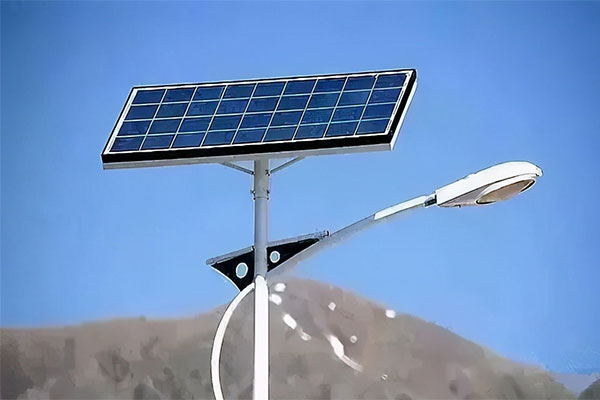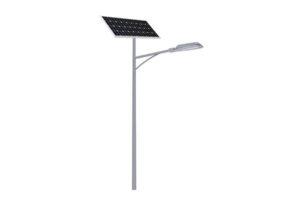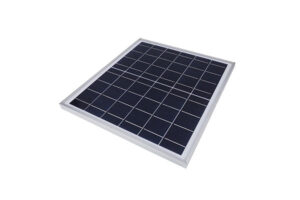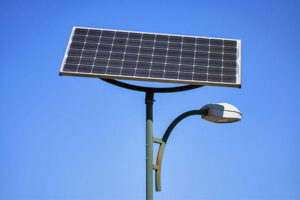Table of Contents
ToggleIn recent years, solar street lights have emerged as a sustainable and cost-effective solution for illuminating our streets and public spaces. Harnessing the power of the sun, these innovative lighting systems offer numerous advantages while minimizing the carbon footprint. However, like any technology, solar street lights also come with a few drawbacks.

Advantages of Solar Street Lights
1. Energy Efficiency and Cost Savings
One of the primary advantages of solar street lights is their remarkable energy efficiency. By utilizing photovoltaic panels to convert sunlight into electricity, these lights operate independently of the power grid, reducing reliance on traditional energy sources. Consequently, solar street lights can result in substantial cost savings on electricity bills, especially in areas with ample sunlight throughout the year.
2. Environmentally Friendly
Solar street lights are an environmentally friendly lighting option. They generate clean and renewable energy, eliminating the need for fossil fuels and significantly reducing carbon emissions. By choosing solar street lights, communities can contribute to mitigating climate change and promoting a greener future.
3. Easy Installation and Maintenance
Solar street lights are relatively easy to install compared to conventional street lights. Since they are not connected to the grid, there is no need for extensive trenching and wiring. This reduces installation costs and disruptions to existing infrastructure. Furthermore, maintenance is minimal, as solar street lights have fewer components that require upkeep. Routine inspections and occasional cleaning of the solar panels are usually sufficient to ensure optimal performance.
4. Autonomous Operation and Reliability
Solar street lights operate autonomously, relying on sunlight to recharge their batteries during the day and illuminating streets at night. This self-sufficiency ensures uninterrupted lighting even during power outages or emergencies. Additionally, advancements in battery technology have improved the reliability and longevity of solar street lights, making them dependable lighting solutions.
5. Versatility and Adaptability
Solar street lights can be installed in various locations, from remote areas with limited access to the power grid to urban streets and public spaces. They offer flexibility in design and can be easily integrated into existing infrastructure. This adaptability makes solar street lights a viable solution for a wide range of applications, including residential neighborhoods, parks, highways, and commercial areas.
Disadvantages of Solar Street Lights
1. Initial Investment
One of the main disadvantages of solar street lights is the initial cost of installation. While solar technology has become more affordable in recent years, the upfront investment for purchasing high-quality solar panels, batteries, and lighting fixtures can still be relatively high. However, it’s important to consider that this cost is offset over time due to energy savings and lower maintenance requirements.
2. Dependence on Sunlight
As the name suggests, solar street lights depend on sunlight for their operation. Therefore, their performance can be affected by inclement weather conditions, such as prolonged periods of cloudy or rainy weather. In regions with limited sunlight, the efficiency and reliability of solar street lights may be reduced, requiring additional backup lighting systems.
3. Limited Lighting Duration
Compared to traditional street lights connected to the power grid, solar street lights typically provide a lower level of illumination. While advancements in LED technology have improved their brightness, solar street lights may not be suitable for areas that require high-intensity lighting for extended periods, such as sports fields or heavily trafficked intersections. In such cases, supplemental lighting may be necessary.
4. Placement and Shadows
The positioning of solar street lights is crucial to ensure optimal exposure to sunlight. Shadows cast by nearby buildings, trees, or structures can obstruct the sunlight and diminish the charging capacity of the solar panels. Careful planning and design considerations are necessary to avoid potential obstructions and maximize the efficiency of solar street lights.
Conclusion
Solar street lights present a compelling alternative to traditional street lighting, offering numerous advantages in terms of energy efficiency, environmental impact, ease of installation, and reliability. While the initial investment and dependence on sunlight pose some challenges, the long-term benefits and positive impact on the environment make them an attractive choice for many communities. By embracing solar street lights, we can illuminate our streets while paving the way for a sustainable and brighter future.




